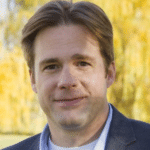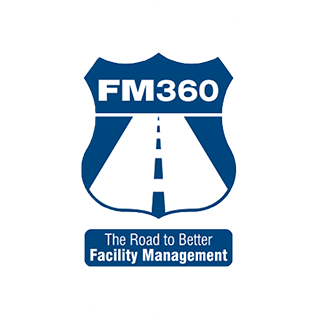I have to admit I am not one for establishing New Year’s resolutions; however, I do think the New Year does bring about the opportunity to review the successes and failures of the last year and to preview how lessons learned may be applied to address the new challenges that this year has in store for us.
For example, some new challenges may include “How do I incorporate my company’s sustainability goals into our facility program?” (see Architectural Trends) or perhaps, “How do I prepare my organization for the exodus of the baby boomer generation from the workforce (see The Forthcoming Millennial Reign)?” Then we still have the age-old challenges of ailing infrastructure, doing more with less, managing customer and stakeholder expectations and perceptions, justifying budget requests, and the addition of new services and facilities with no new resources – just to name a few…
Many of the challenges we face are thrust upon us, thrown over the fence at us, or left flaming on our doorstep; however, as some of you have heard me say, we, as facility management professionals, are our own worst enemies in that we are really good at shooting ourselves in the foot, reloading, and doing it again. For example, we continue to take the same old approach to addressing these old and new challenges. This sounds awfully similar to the definition of insanity – doing the same thing over and over again, expecting different results… Hey, I’m just as guilty as many of you. If you have spent any number of years in facility management you have likely acquired thick skin and quite often a very thick head – it’s from all those years of beating our heads against the wall…
However, with a thick head and thick skin, facility managers have also learned to be very creative in solving problems and figuring out a way to do more with less. There’s a reason why services that don’t necessarily fit within facilities end up under our program – “We don’t know how to fix this problem. Let’s give it to Facilities, they’ll figure it out.” And they’re right, we do. God bless facility folks, the modern-day MacGyvers and unsung heroes.
Now I have to be careful as I do not want to inflate our thick heads – that could be dangerous… We might be able to get that square peg into the round hole; however, it does not mean that we did it in the most effective and efficient manner nor does the solution necessarily align with what’s best for the overall organization. Which leads me back to learning from our successes and failures and leveraging that insight to develop our plan for 2014 and beyond.
I am a fervent believer in the need to establish a clear vision and direction for the group – “without vision, the people perish…” It is incumbent upon facility managers and directors to develop and promote vision & mission statements that set the tone for the facility team and corresponding goals that lead to the fulfillment of those statements.
As a refresher, a vision statement is defined as “What do we want to be?” or “How do we want to be perceived by customers/stakeholders?” There should be no “do” or action verbs in the vision statement. The vision statement should align with that of the overall organization’s, as it does no good to set a direction that is counter to that of the executives and upper management. I shall refrain from giving examples, because I do know your company’s vision & mission, and I do not want to deter you from seeking out that over-arching direction of the organization. However, I would be happy to assist in your endeavors, if desired.
A mission statement identifies what and/or how we do things that support the overall organization and that drives us toward our vision. This can be a juggling act as you do not want to be generic or too general, but you do not want to paint yourself into a corner either. The mission statement should be deliberate and understandable to those outside the department, as it will be a key marketing tool for promoting the value of the team and its role in the success of the organization. The mission statement will then be used to develop goals for the year.
Team and individual goals should tie back to the vision & mission statements. The SMART approach is highly recommended – Specific, Measurable, Achievable, Reasonable, and Timely. You will use these goals to set milestones for success and to measure the progress of your team toward the vision and mission.
Please do not let this overwhelm you. It is much easier to do than it sounds. I am a proponent of K.I.S.S. – Keep It Short & Simple. If you don’t know where to start or how, start simple. How do you eat an elephant? One bite at a time. This is a similar approach that I am taking with some of my clients in assessing and improving their facility management programs. We will spend a few days the first month to establish the vision/mission/goals and set a plan, then spend a few days of each subsequent month implementing a piece of the plan – one bite at a time.
The worst thing you can do is nothing – just keep trying to solve the same old challenges, the same old way. There is a better way. You just need to start down the path.
 John Rimer is the founder & president of Facility University and president of FM360 Consulting. John has worked in the facility management industry since 1997 in a variety of roles and industries, including manufacturing, corporate facilities, data centers, education, municipality, bio-tech, and healthcare. His primary focus has been on assessing, developing, and improving facility management programs. John is a Certified Facility Manager (CFM) through the International Facility Management Association (IFMA) and is an IFMA Qualified Instructor and Building Operator Certification (BOC) Instructor. FM360 provides general facility management consulting and coaching, including CMMS implementation & optimization, emergency response program development, and career & leadership mentoring. To learn more visit fm360consulting.com.
John Rimer is the founder & president of Facility University and president of FM360 Consulting. John has worked in the facility management industry since 1997 in a variety of roles and industries, including manufacturing, corporate facilities, data centers, education, municipality, bio-tech, and healthcare. His primary focus has been on assessing, developing, and improving facility management programs. John is a Certified Facility Manager (CFM) through the International Facility Management Association (IFMA) and is an IFMA Qualified Instructor and Building Operator Certification (BOC) Instructor. FM360 provides general facility management consulting and coaching, including CMMS implementation & optimization, emergency response program development, and career & leadership mentoring. To learn more visit fm360consulting.com.






